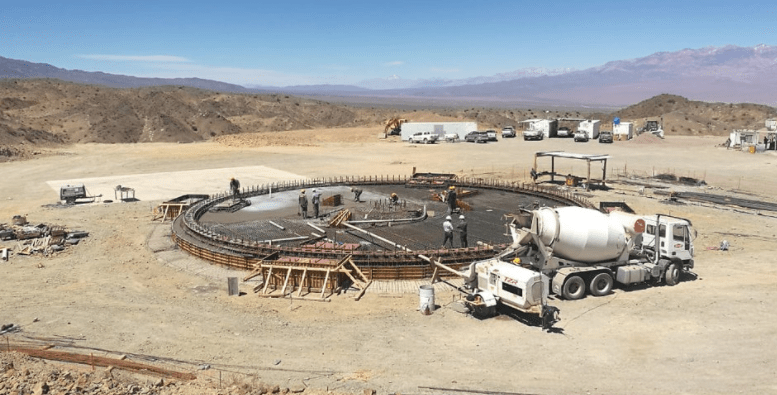
With the visit of the head of the United States Southern Command, Laura Richardson, to Argentina, the public debate about the presence of the Chinese space base in the province of Neuquén has been revitalized. This complex, known as the Deep Space Station, was established as a result of bilateral agreements between Argentina and China between 2012 and 2014, during the government of Cristian Fernández de Kirchner. Since 2016, under the administration of Mauricio Macri, it has been stipulated that these facilities will not be used for military purposes.
The base, located on a 200-hectare plot of land in Bajada del Agrio, department of Picunches (Neuquén), has a 35-meter-diameter satellite dish, the only one in China outside its territory.
The Deep Space Station in Neuquén is a space technological cooperation facility between China and Argentina, but it is not the only one of this kind that exists in the country. In fact, in another Argentine province, Mendoza, there is a similar facility, Deep Space 3 (DS3), but this was placed as a result of an agreement with the European Space Agency.
Beyond these bases, it is worth highlighting another project dedicated to space and that arises from a collaboration between China and Argentina. This is CART, the Chinese-Argentine radio telescope, located in the province of San Juan.
US Southern Command expresses concern over Chinese base in Argentina
The CART project, with its impressive 40-meter diameter dish, is located in the El Leoncito astronomical complex. This project, developed since 2011 and with an agreement signed in 2015, has been the result of collaboration between China and Argentina, with the support of the Ministry of Science and Technology of China through the Chinese Academy of Sciences (CAS), the Government from the Province of San Juan, Conicet and the National University of San Juan (UNSJ).
The radio telescope, equipped with high-frequency receivers, makes it possible to capture radio signals coming from deep space, distant cosmic objects and the Earth itself. In addition, CART collaborates with the LLAMA (Large Latin American Millimeter Array) facility, which multiplies its capabilities in the field of astrophysics.
Among the notable objectives of CART is its contribution to the establishment and maintenance of the International Celestial and Terrestrial Reference Framework. This work is crucial for understanding the position and motion of celestial objects, as well as for a wide range of terrestrial applications, from satellite navigation to the prediction of natural phenomena.
Although the CART project has generated less controversy than the space base in Neuquén, it is another example of scientific cooperation between China and Argentina and the close relations that these countries have maintained in recent years, so its relevance deserves attention proportional to its importance, which has been underestimated until now.

He is a student at the Faculty of Law of the National University of Cuyo, Mendoza, Argentina. She is a member of the Research Seedbed of said Faculty and the Study Group on India and Southeast Asia of the National University of Rosario. She also completed the Diploma in Law and Digital State 4.0. She is an intern at SHEN, a business consultant with Asia and an editor at ReporteAsia.
Source: https://reporteasia.com/sociedad/2024/04/04/cart-proyecto-espacial-china-argentina/

